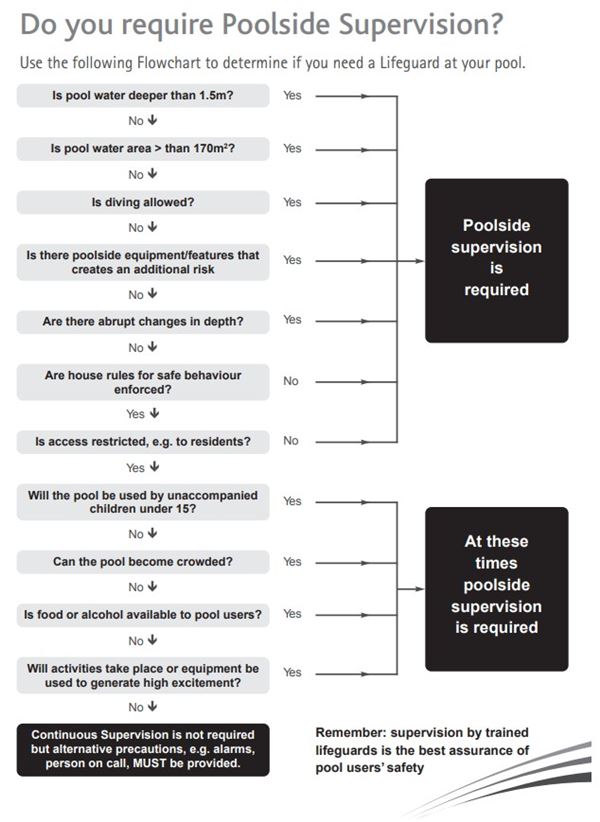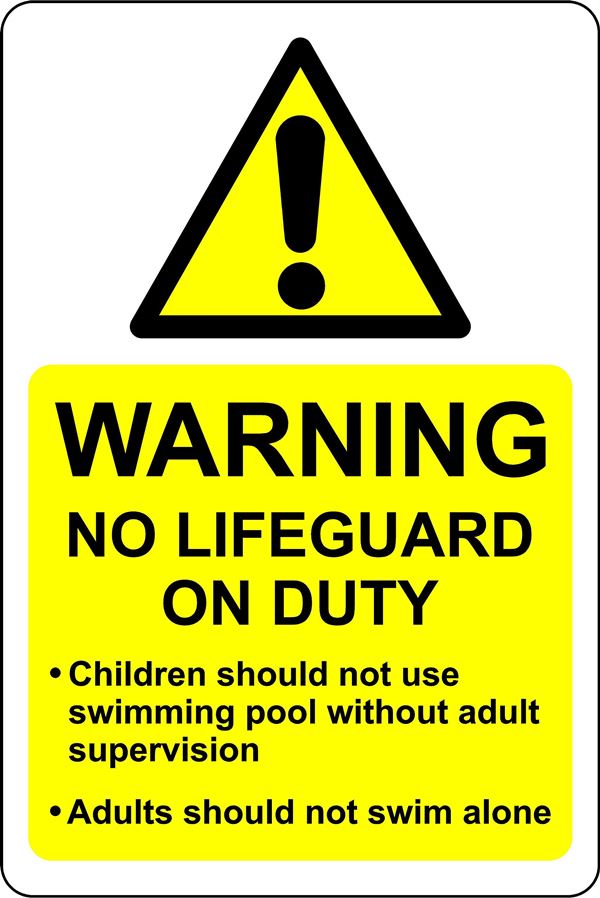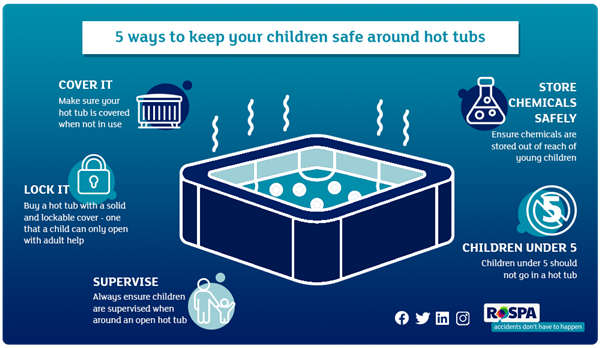Pools and hot tubs

Swimming pool
This page offers an overview of guidance available to operators of swimming pools and spa pool facilities. Pool operators are legally required to protect the health and safety of workers and pool users.There are no swimming pool specific health and safety laws. However, swimming pool operators must comply with their general duties under the Health and Safety at Work etc. Act 1974 and the associated regulations.
Ten safety essentials to start
Take a look at our ten safety essentials pages. These pages will guide you through the essentials for managing health and safety in your business. The areas below contain specialist advice for you to consider when writing your risk assessments and implementing safe systems of work & procedures to keep staff and visitors safe.
Pools covered by the guidance
- communal pools
- leisure pools
- water parks
- hotel pools
- camping pools
- club pools
- paddling pools that are part of a larger pool or complex
- therapeutic pools
- pools in places of education
- diving pools
- military training pools
- rescue training pools
- counter-current training pools
- scuba-diving pools.
Risk assessment
As a pool operator, under the Management of Health and Safety at Work Regulations (MHSWR), you must carry out an assessment of the risks which may affect employees, and others, as a result of the work activity. These requirements also take into account members of the public using the pools. You must then take appropriate action to eliminate or reduce those risks as far as is reasonably practicable.
You should use your risk assessment to write your Pool Safe Operating Procedures (PSOP). Your PSOP is made of two main parts: Normal Operating Plan (NOP) and your Emergency Action Plan (EAP).
Pool Safety Operating Procedures (PSOP) – Example Content List Royal Life Saving Society
You may also need to consider:
Guidance to help you comply with the law
Managing health and safety in swimming pools has been produced to help pool operators comply with health and safety law. Following the guidance is not compulsory and you are free to take other action. But if you do follow the guidance you will normally be doing enough to comply with the law.
The Pool Water Treatment Advisory Group have produced a code of practice for operators of swimming pools.
BS EN 15288-2:2018 Swimming pools for public use. Safety requirements for operation. This document specifies safety requirements for the operation of classified pools according to Clause 4. It is intended for those concerned with the operation and management of classified swimming pools. It provides guidance about the risks for staff and users associated with public swimming pools, by identifying the precautions needed to achieve safety.
Sports infection prevention and control guidance
Sports participation provides an opportunity for the transmission of infectious disease to both participants and staff. Infections can be acquired from close physical contact, sharing facilities and equipment. Sports infection prevention and control guidance (PDF, 94KB) was prepared by the Northwest Health Protection Agency (now UKHSA) and represents what is considered to be good practice by members of the working group. This guidance has been written to help owners and managers of sports clubs to meet their legal duties under health and safety legislation.
Keep your tackle clean (PDF, 205KB) offers advice to members/athletes.
Water quality
The Pool Water Treatment Advisory Group (PWTAG) produce detailed guidance on swimming pool water quality and treatment. HSE recognises their guidance as a useful resource for pool operators when drawing up their operating procedures. We will consider this guidance as the standard to be achieved in effectively managed swimming pools.
Microbiological quality
It is important that bacteriological monitoring is carried out on a regular basis. This is necessary to ensure that the pool is being adequately disinfected and that no person is being exposed to any micro-organisms in the pool. This should be done monthly for premises open all year, for seasonal premises, 3 samples spread over your opening period as well as at the beginning of the season
| Microbiological levels | Satisfactory levels |
|---|---|
| Colony Count (37°C) | No more than 10cfu/ml |
| Total Coliforms | Abscent in 100ml |
| Eschericia Coli | Abscent in 100ml |
| Pseudomonas aeruginosa | Absent in 100ml for all spas and whirlpools |
Chemical testing

Disinfectants can be harmful to bathers if they are not correctly used. It is therefore very important that chemical levels are checked on a regular basis. When dosing is manual the pool should be tested for chlorine and pH levels prior to use, and every 2 hours until closing on heavily used pools, and at least three times a day on lightly used pools. It is strongly recommended that records of these checks are documented in case of queries/complaints. It is very important that the chemicals in the pool are maintained at the correct levels. It is also important that any pool test equipment is kept clean and that tablets are in date. Staff must know how to carry out tests and know what action is required where chemicals do not meet recommended levels.
| Free Chlorine | 1.5 – 2.00 mg/l |
| Combined Chlorine | Should be less than the free (ideally half or less) |
| pH Value | 7.2 – 7.8 (however 7.2 – 7.4 should be the target) |
| Free Chlorine | 2.5 – 5.0 mg/l |
| pH Value | 7.2 – 7.8 (the lower the pH the better the disinfection) |
| Cyanuric Acid Levels |
These should be tested once a week until levels are consistent when this can be increased to monthly. (Recommended levels below 200mg/l (ideal range 50- 100mg/l.)
|
Please note: Adding 60 mg/l of Cyanuric Acid to an outdoor pool using hypochlorite at the start of the season will help to stabilise your free chlorine levels, especially when there is strong sunlight.
| Total Bromine | 4.0 – 6.0mg/l |
| pH Levels | 7.2 – 7.8 |
It is important that these levels are strictly adhered to as a number of bathers exposed to this chemical can suffer skin irritation and rashes.
| Total Bromine | 1.5 3.5mg/l |
| pH Value | 7.8 – 8.2 |
| Total Alkalinity | 100mg/l |
Alkalinity
Acceptable Range 75 – 200 mg/l Alkalinity should be measured weekly using alkalinity test tablets.
Total Dissolved Solids (TDS)
Total Dissolved Solids (TDS) This is the sum of the weight of soluble material in the pool. TDS levels increase with addition of pool chemicals, bather pollution etc..The pool water is compared with your source water (e.g. mains) using an electronic meter. TDS should not be allowed to increase more than your source water by 1000mg/l, up to a maximum of 3000mg/l. Dilution by replacing up to 30 litres of water per bather per day should keep TDS to an acceptable level.
Calcium Hardness
This is the measure of the calcium salts in the water. Recommended levels are between 75 & 150 mg/l, below 40mg/l the water can be corrosive to the fabric of the pool plant, above 150 mg/l can lead to scale deposits. It should be checked weekly using appropriate tablets.
Provision of pool supervision/lifeguards
You must have robust systems to ensure the safety of pool users. .
These should focus on: preventing pool users getting into difficulty by intervening early and promoting responsible behaviour;
- identifying pool users in difficulty;
- procedures to effectively perform a rescue.
A risk assessment must be undertaken to determine the level of supervision required. There is no strict requirement to provide lifeguards or constant supervision of a swimming pool. However you must undertake a thorough risk assessment to determine if a supervision or lifeguards are required, and record your findings.

Consider the following when carrying out your risk assessment:
- the nature of the pool (public, school, hotel, holiday park etc.);
- pool design (for example layout, access from changing rooms);
- pool water area;
- pool depth;
- abrupt changes in depth;
- pool and pool hall features (for example glare, reflections, blind spots);
- the demographic and ability of pool users, if known;
- occupancy levels;
- nature of activities in the pool (children’s play session, club swimming, swimming lesson);
- pool features posing additional risk, for example features creating turbulent water, use of inflatable equipment, flumes, diving boards etc.;
- if/where diving is permitted;
- the practicability of enforcing house rules for safe behaviour;
- access/admission arrangements, for example unrestricted access to hotel residents, child admission ratios. Supervision of disabled people .
Guidance from the Royal Lifesaving Society
- UK Swimming Pool Operator Guidance for Automated Monitoring and Detection systems in public lifeguarded swimming pools
- Lifeguards - Mobile Phones and Smart Devices
- Frequency of Ongoing Training for Lifeguards
- Lifeguarding and Ramadan Safety Considerations
Providing information to pool users

It is important to provide information to users about the hazards and safety features of your pool. If the pool is not manned, it is more important to ensure that users are given a safety briefing and having pertinent points displayed in signage.
Signs are important where:
- There are sudden changes in depth, especially at shallow and deep ends.
- You need to show where it is unsafe to swim or dive.
- It is necessary to provide instructions on safe use of the pool or equipment e.g. slides
- Emergancy proceedures

Miscellaneous topics
Pool Water Advisory Group - has produced a number of technical notes including:
- Faecal contamination
- Blood or vomit in the pool
- Microbiological sampling
- Swimming pool covers operation and safety
- Suction Entrapment In Spa Pools
- Baby and toddler swimming in warm hydrotherapy pools
Chartered Institute for the Management of Sport and Physical Activity
Hot tubs & spa pools
Spa-pool systems are increasingly popular and can be found in a variety of sizes and settings. They are known by various names including hot spas, hot tubs, whirlpool spas and portable spas. Such systems pose a reasonably foreseeable risk as they are a recognised source of diseases caused by infectious agents including the organism that causes legionnaires' disease, primarily Legionella pneumophila. There have been a number of outbreaks linked to spa-pool systems in leisure centres, hotels, holiday homes, caravan parks on cruise ships and on display in shops.
All settings should have a risk assessment in place, where the risks have been identified and control measure put in place. These control measures will include chemical treatment of the water, cleaning and water sampling.
The HSE have produced guidance on The control of Legionella and other infectious agents in spa pool systems

Hot tubs and children
Hot tubs in rented accommodation can be a serious risk to young children. You should follow the RoSPA hot tub safety advice.
- It is not recommended that children under 5 use hot tubs
- Older children should spend no longer than 20 minutes in a hot tub and the temperature for that tub should be set at no more than 35°C.
Fire safety
You will also need to ensure that you have suitable fire precautions in place;
- A guide to making your small non-domestic premises safe from fire
- Small and medium places of assembly
- Large places of assembly (references swimming pools)
Fire safety precautions are enforced by Lancashire Fire and Rescue and not the Council.
Last updated: 16 August 2024
